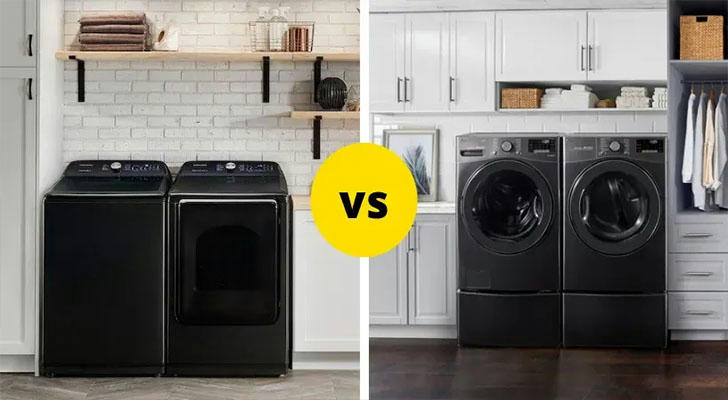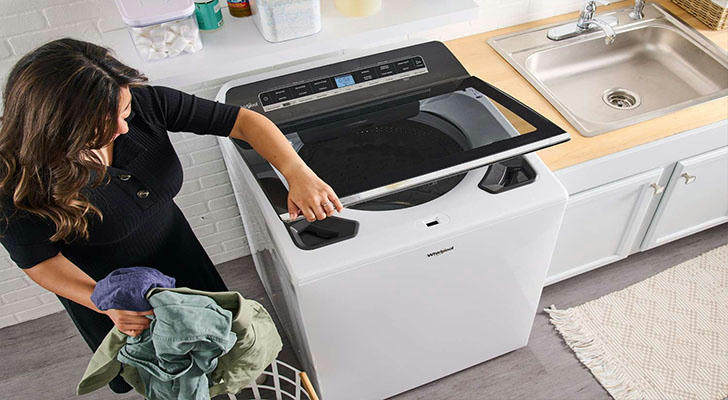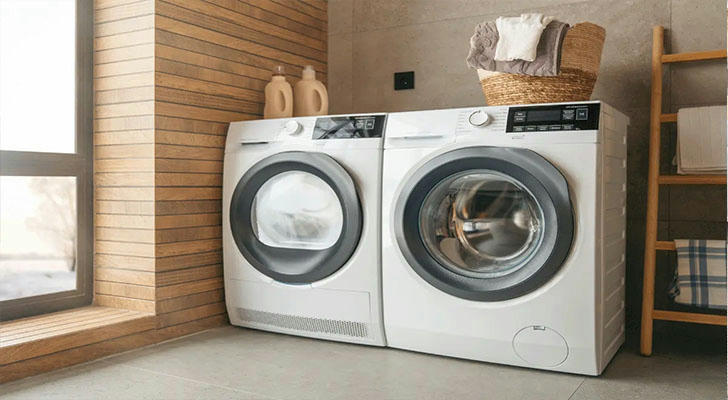Different Types of Washing Machines: Pros and Cons - How to Choose the Right Model for You

Washing machines are an essential appliance in modern households, greatly enhancing our convenience. However, with the wide variety of washing machines available on the market, consumers often feel confused when making a choice. This article will introduce the characteristics, advantages, and disadvantages of different types of washing machines, as well as provide actionable selection advice to help you find the model that best suits your needs.
I. Main Types of Washing Machines and Their Characteristics
1. Top-Loading Washing Machines

Working Principle: Top-loading washing machines use a rotating agitator to create water flow, cleaning clothes through friction.
•Advantages:
(1)Affordable: Generally less expensive compared to other types, making them suitable for budget-conscious families.
(2)Fast Washing Speed: Typically has shorter wash cycles, ideal for daily quick washes.
(3)Large Capacity: Suitable for handling large loads of laundry, especially bulky items.
•Disadvantages:
(1)Higher Wear and Tear: Can cause more wear on clothes, leading to deformation.
(2)Higher Water Consumption: Uses more water compared to other types.
2. Front-Loading Washing Machines

Working Principle: Front-loading washing machines clean clothes by rotating a drum that simulates hand washing.
•Advantages:
(1)Excellent Cleaning Performance: Better for delicate fabrics and provides superior cleaning results.
(2)Water and Energy Efficient: Uses less water and is more environmentally friendly.
(3)Versatile Functions: Usually offers multiple wash programs to meet various needs.
•Disadvantages:
(1)Higher Price: Initial investment is generally higher, suitable for families with a larger budget.
(2)Longer Wash Times: Wash cycles typically take longer compared to top-loading machines.
3. Washer-Dryer Combos
Working Principle: These appliances combine washing and drying functions into one unit.
•Advantages:
(1)Space-Saving: Ideal for small apartments or homes with limited space.
(2)Convenient Operation: Users can set it once and complete both washing and drying in one go.
•Disadvantages:
(1)Average Drying Performance: The drying function may not perform as well as a standalone dryer.
(2)Higher Maintenance Costs: Repair and maintenance costs can be higher.
4. Semi-Automatic Washing Machines
Working Principle: These require manual filling and draining of water, typically consisting of two tubs for washing and spinning.
•Advantages:
(1)Cost-Effective: More affordable than fully automatic machines.
(2)Flexibility: Users can control each step according to their needs.
•Disadvantages:
(1)Cumbersome Operation: Requires manual intervention, making it less convenient than fully automatic models.
(2)Limited Cleaning Effectiveness: May not clean as thoroughly as automatic machines.
II. Factors to Consider When Choosing the Right Washing Machine
1.Family Size and Usage
•Assess how many people are in your household and how often you do laundry. For larger families or frequent use, consider a machine with a capacity of at least 7kg or more.
2.Budget
•Determine your budget range before shopping. Remember to factor in not just the purchase price but also long-term operating costs (water, electricity).
3.Space Limitations
•Measure the space where you plan to install the washing machine. Ensure there’s enough room for door clearance and ventilation.
4.Frequency of Use
•If you do laundry frequently, investing in a more durable model with better energy efficiency can save money in the long run.
5.Special Needs
•If you have specific requirements (e.g., baby clothes or sensitive skin), look for machines with features like steam cleaning or allergen removal settings.
III. Actionable Solutions for Selecting Your Washing Machine
1.Research Models Online
•Use online resources like consumer reviews and comparison websites to gather information about different models' performance and reliability.
2.Visit Showrooms
•Go to appliance stores to see models in person. This allows you to assess size, features, and even noise levels during operation.
3.Ask for Recommendations
•Consult friends or family who have recently purchased washing machines for their insights on what works well for them.
4.Check Energy Ratings
•Look for energy-efficient models with high Energy Star ratings to minimize long-term utility costs.
5.Consider Warranty and Support
•Check the warranty offered by manufacturers; longer warranties often indicate confidence in product durability. Also, inquire about customer support options should issues arise.
IV. Case Study
Take the example of Ms. Zhang, a full-time mother with two children. Her kids frequently dirty their clothes, so she needed a machine that could quickly clean large items. After comparing options online and visiting several appliance stores, she ultimately chose a top-loading washing machine due to its affordability and large capacity. Ms. Zhang found this model not only reasonably priced but also capable of handling large loads efficiently—perfect for her busy lifestyle. Additionally, she regularly maintains the machine by cleaning the filter monthly and running a maintenance cycle every few months to keep it in optimal condition.
V. Conclusion
Understanding the characteristics, advantages, and disadvantages of different types of washing machines is crucial when selecting one that suits your needs. By considering factors such as family size, budget, space limitations, special requirements, and following actionable solutions during your selection process, you can make an informed decision that enhances your laundry experience. We hope this article provides practical guidance for your purchasing journey, making your life more convenient and comfortable.
